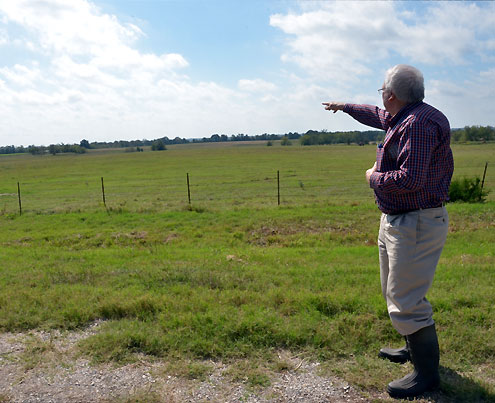Ladonia, Texas -- The first question most people ask in regard to the two lakes proposed for Fannin County is "when?"
At a media conference held October 17 in Ladonia regarding the proposed Lake Ralph Hall, representatives of Upper Trinity Regional Water District (UTRWD) said the target date to have this future water source online is 2025. Considering that construction of Leon Hurse Dam would take 2-3 years and that most new lakes would require another 2-3 years to fill up, work at the lake could begin somewhere between 2019 and 2021 in order to hit that target date.
This isn't an exact science, however, or there wouldn't be heavy equipment sitting at the bottom of Lake Ray Hubbard. Workers were finishing up in that lake bottom when extremely heavy rains inundated the area and the lake began filling up far ahead of schedule. Previous estimates indicated it would take as long as five years for the lake to fill up; it was full in one year.
Several variables play havoc with a reliable timetable. A series of dry years which threaten existing water supplies would speed the process to a slight degree. If the population growth of Denton County and Collin County in the next decade exceeds expectations, increased demand for water could also affect the timetable. Realistically, Lake Ralph Hall will be online sometime between 2023 and 2030.
Currently, both lakes proposed for Fannin County are still in the permit stage. UTRWD officials believe they will secure their state and federal permits next year for Lake Ralph Hall. Lower Bois d'Arc Creek Reservoir, a 17,000-acre lake North Texas Municipal Water District plans to build in northern Fannin County, appears to be one year behind Lake Ralph Hall in the permit process. There are four water suppliers responsible for delivering water to the metroplex: Dallas Water Utilities, Tarrant Regional Water District, North Texas Municipal Water District and Upper Trinity Regional Water District.
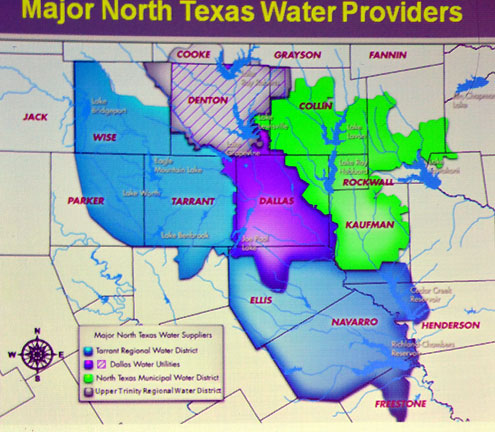
North Texas is the fastest growing region in the state; one in four Texans currently resides in the metroplex. As the economy recovers, that growth is almost certain to accelerate. Denton County ranked twenty-ninth on the US Census Bureau's list of fastest growing counties between 2000 and 2007, with a 41.4% increase in population. In a 50-year span between the 1960 U.S. Census and the 2010 Census, Denton County grew from 47,432 residents to 662,614. Next door in Collin County, the growth has been even more astronomical. During that same 50-year span, Collin went from 41,247 residents to more than 3/4 of a million residents -- 782,341 according to the 2010 Census.
While it is a matter of conjecture exactly when water demand will exceed current supplies -- most studies indicate somewhere between 2030 and 2040 -- new lakes will be needed. UTRWD believes the site of proposed Lake Ralph Hall is a unique location because no cemeteries are within the proposed lake boundaries, no oil & gas wells or transmission lines would be affected, and no significant cultural resources will be harmed. Given the undeniable need for more surface water in the future, it is hard to imagine building a 7,605-acre lake any place else that only displaces 15 home sites.
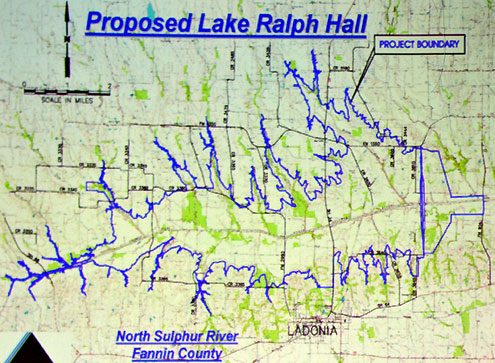
Another aspect that is unique to the proposed site of Lake Ralph Hall is that this lake could turn an area that is witnessing erosion on a grand scale into one of the deepest lakes in North Texas. The 300-feet wide, 60-feet deep channel could actually benefit a lake by resulting in increased water storage coupled with less evaporative loss.
The channel is eroding so uniformly that it almost looks as though it was cut to its current dimensions, not the relatively miniscule 16-feet wide, 10-feet deep channel that was excavated in 1928-29.
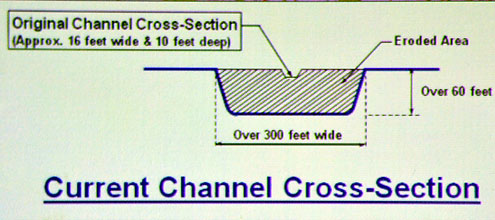
"It's smoother than Central Expressway in places," remarks Tom Taylor, Executive Director of UTRWD, tongue in cheek.
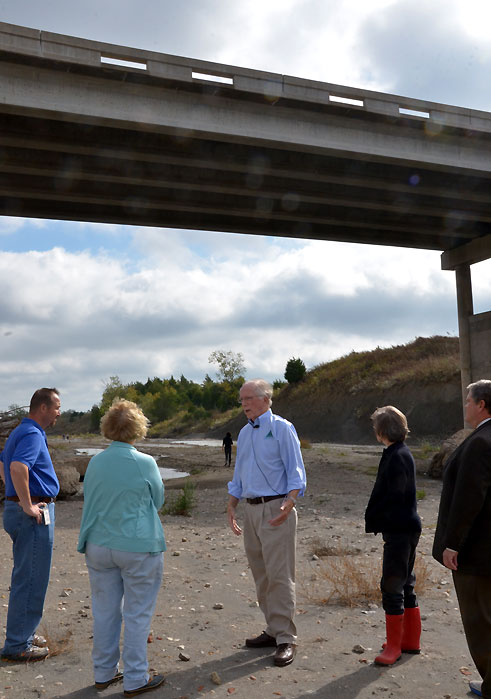
Lake Ralph Hall also enjoys local support. Ladonia Mayor Jan Cooper welcomed local media October 17 to a briefing in regard to the proposed lake. Two former mayors, Doug Franklin and Leon Hurse, were also in attendance to voice support for the project.
Mr. Hurse is something of a visionary, having touted the constantly eroding channel as a possible lake site for decades.
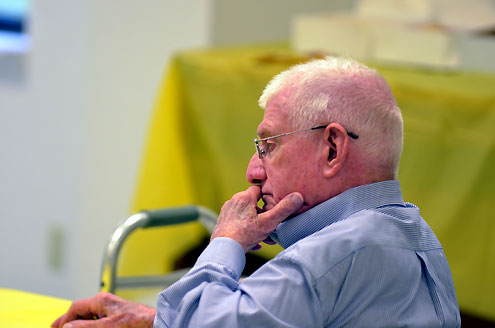
"We started way back in the early '90s," says Mr. Hurse, recalling some of the first tumultuous meetings regarding a proposed lake on North Sulphur River. In honor of his years of faithful support, the dam on Lake Ralph Hall has been officially proclaimed Leon Hurse Dam.
"It started out as 'damn Leon Hurse' and ended up as Leon Hurse Dam," quips the good-natured former mayor.
